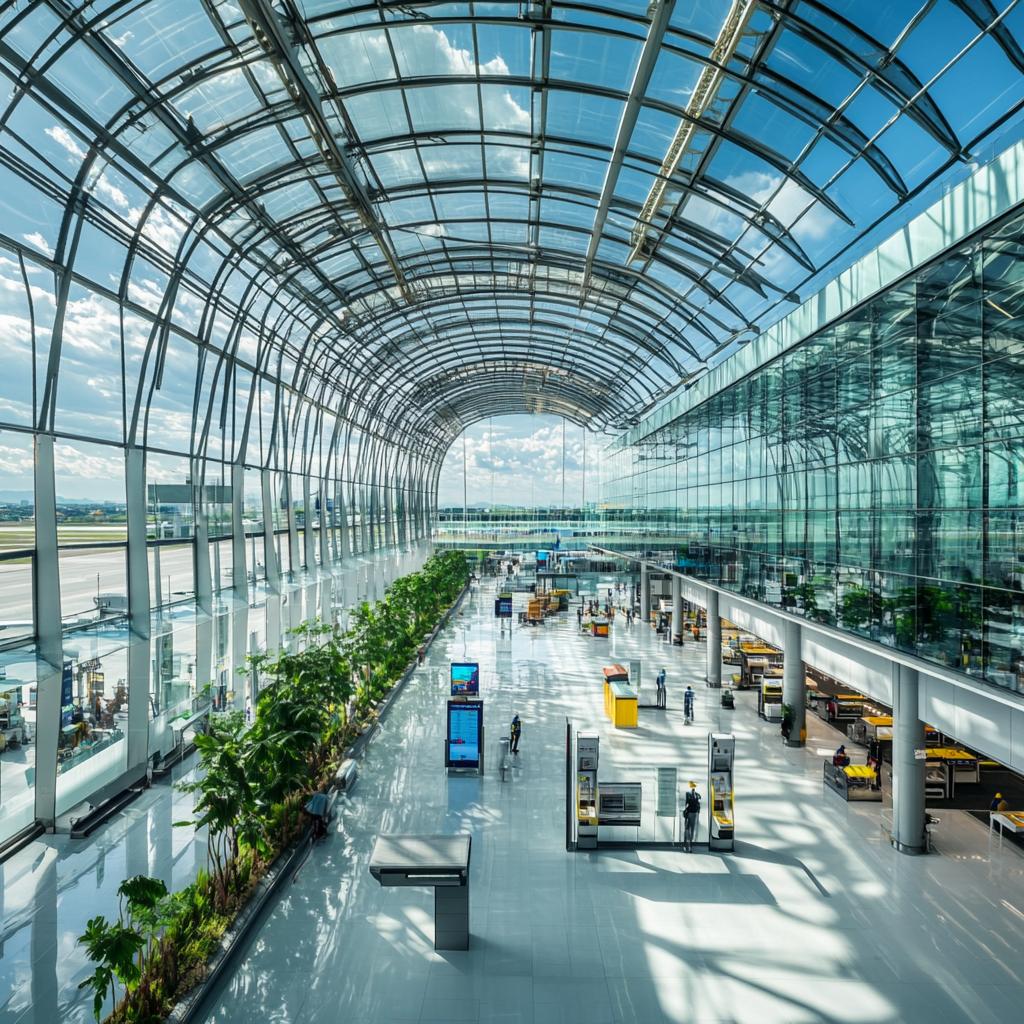As the bustling and vibrant gateway to Thailand, Suvarnabhumi Airport is poised for a remarkable transformation, tailored to elevate its stature on the global aviation stage. Picture throngs of excited tourists arriving at the Suvarnabhumi airport passenger terminal, their excitement met by a symphony of progress echoing throughout the terminals. Airports of Thailand (AoT) has meticulously charted a course to expand this aviation behemoth, ambitiously setting its sights on accommodating a staggering 150 million passengers annually by the year 2033.
With zeal and determination, AoT president Kerati Kijmanawat unveiled a mammoth 142 billion baht plan — a bold blueprint that sees Suvarnabhumi not just preserving but enhancing its place in the aviation hall of fame. Currently clocking a respectable 65 million passengers each year, the airport is ready to unfurl its wings and climb from its comfortable perch in the top 30 to soar into the prestigious top 10 airports worldwide. And how, you ask, will they achieve this sky-high ambition?
The answer begins with the East Expansion project, a 12-billion-baht endeavor that promises to push the annual passenger capacity by an additional 15 million, bringing the grand total to a jaw-dropping 80 million. Mark your calendars, for the bidding process for this landmark undertaking is poised to kick off in May, with a chosen contractor expected to emerge by July. Then, the magical symphony of construction begins as shovels hit the ground in November, marching toward a harmonious completion by 2028, and unfurling an area of 480,000 square meters for passengers to explore.
But the crescendo doesn’t stop there; a grander opus awaits. Behold the South Terminal, a monumental project slated to unlock a further 70 million passenger capacity annually. A whooping 130 billion baht will breathe life into this endeavor, with construction and bidding processes set to grace 2027 and culminate triumphantly by 2033. With the South Terminal acting as a formidable cornerstone, Suvarnabhumi will proudly accommodate up to 150 million globe-trotters each year.
In a strategic pivot that speaks to both foresight and pragmatism, an earlier plan to sprout a second satellite terminal (SAT-2) was shelved. The South Terminal, like a phoenix, rises to offer greater capacity and weave away future quagmires, particularly in the realms of baggage handling and transfer processes, which the SAT-2 might have entangled.
Equally impressive is the decision to snip out unnecessary expansions in the west and north. With laser-focused precision, AoT has zeroed in on addressing the clogging arteries of passenger processing — the rush-hour madness at check-in, security screening, and immigration. The introduction of a veritable renaissance in airport technology — self-check-in kiosks, suave self-bag drop systems, lightning-fast e-gates, and futuristic biometric identification — promises to pour oil on these troubled waters.
AoT’s innovations already bear fruit, with immigration capacities swelling from 5,500 passengers per hour to a robust 7,200. The installation of additional check-in and immigration systems is in the pipeline, ensuring the airport’s arteries pump smoothly against the swell of eager travelers.
Currently, the hustle and bustle of Suvarnabhumi are expected to usher close to 65 million passengers through its gates this year, a leap from last year’s 60 million. With each milestone in this grand plan, Suvarnabhumi stands tall, ready to shoulder the embrace of the world while shedding its confines — the dazzling beacon of Thailand’s aviation adventure awaits!


















This expansion plan sounds amazing, but how will it impact local communities? I’m worried about the environmental and social costs.
I agree! It’s a massive project and while growth is good, we need to consider the impact on residents and wildlife.
Exactly. It’s essential AoT addresses these concerns during planning. Sustainable growth should be the priority.
In my opinion, the economic benefits outweigh the negatives. More passengers mean more tourism and revenue for Thailand.
That’s true, but sustainable development shouldn’t be sacrificed for economic gain. Balance is key.
Honestly, I’m just excited for shorter lines and faster processing at the airport. It’s about time!
I hope so too! Sometimes I avoid Suvarnabhumi just because of the long immigration lines.
While the passenger capacity increase sounds promising, the success truly hinges on efficient management and execution of the expansion project.
Exactly, Professor. We’ve seen projects with potential crumble due to poor management. Let’s hope AoT doesn’t follow that path.
Indeed. Effective management is crucial for long-term success, not just initial hype.
I don’t understand why they canceled the second satellite terminal. Wasn’t it necessary for handling more people?
The South Terminal offers more capacity and efficiency. It seems like a strategic move to streamline operations.
I guess that makes sense if it solves more problems. Thanks for clarifying!
Right, Karen, but they realized it would create more issues than it solved, especially with baggage handling.
Can’t believe they’re going ahead with this huge development without a major focus on reducing carbon emissions.
Well, the focus is on resolving passenger congestion, but environmental considerations should be part of the plan.
Absolutely, Mark. Modern expansions should automatically include eco-friendly considerations in their blueprints.
It’s going to be amazing for tourism and business! Just imagine the global connections we’ll strengthen.
True, Anna. This can solidify Thailand’s position as a major hub in the region.
Can they really achieve all these plans by 2033? Sounds pretty ambitious to me.
With Thai time, anything’s possible! But seriously, if they manage efficiently, it could be done.
As long as ticket prices don’t increase dramatically, I’m on board with this expansion!
There’s a possibility of increased pollution with more flights. Wondering how they’re tackling that?
Overall, I’m optimistic about these changes. The benefits of efficient air travel could really enhance international relations and commerce. Let’s just hope they stick to the schedule and budget!